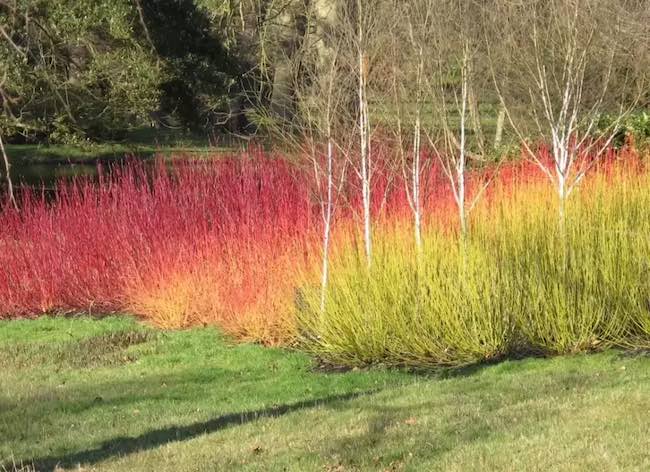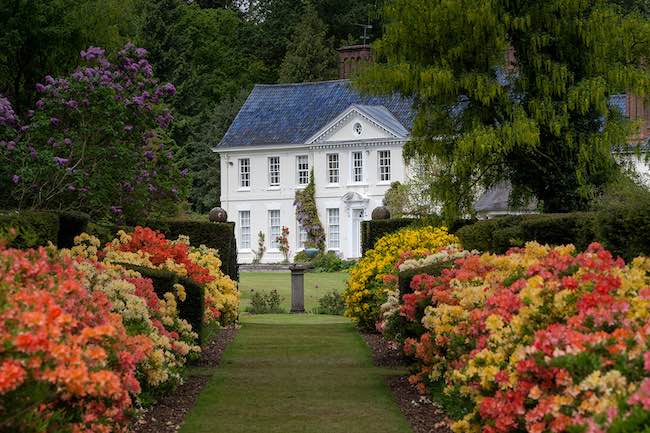Planning a Larger Garden: Tips and Ideas

Cornus stems
Creating a larger garden can be a daunting task, but with the right planning and preparation, it can be a rewarding experience. One of the keys to success is to think ahead and plan for different areas and themes within the garden. This is especially true for a woodland-style garden, where each area can have its own unique character and purpose.
The first step in planning a larger garden is to create an overall plan that details the different areas and themes. This plan does not need to be detailed, but it should provide each area with a theme or purpose. For example, you may want to create areas for winter color, autumn color, vistas and views, focal points, seating, spring color, and walks.
Winter color is usually produced near your property, so you can enjoy the views from your home. Using plants like cornus stems viewed from a distance can create an excellent effect. Autumn color can be created using plants like Parrotoica persia, amelanchier, liquidamber, and ceris. Vistas and views are important in all gardens, but especially in large gardens. Focal points can be pots, trees, or plants that create a visual interest. Seating areas should be located in full sun and light shade for those early hot days. Spring color tends to be early in the year, before the trees come into full leaf, and can be created using lace cap hydrangeas, azaleas, and rhododendrons. Walks can be created as features, providing spring and summer color.

Azalea Walk
Once you have created a plan for each area, the next step is to connect them together seamlessly. This can be achieved by using hedging, borders, and other design elements. The real skill in garden design is in the connection between different areas, and how they work together to create a cohesive and harmonious garden.
Another important consideration in planning a larger garden is to think ahead and save money. For example, a woodland garden produced within three months as against a garden over five years can save you up to 65 percent on plant costs. Areas that you are not planning to get to for a couple of years can have large weeds, such as brambles, strimmed down and covered with landscape sheeting. A year later, these areas will be weed-free and ready to develop. Feature plants like Parrotoica persia and amelanchier should be planted early in the project as small plants protected from pests such as deer and rabbits, which will save money against planting them later.

Parrotoica persia in the autumn
Producing plants like Cornus Midwinter Fire from hardwood cuttings can save you around £22 per plant. When you need over 100 plants to produce a cornus stem bank against a water feature, the cost savings start to add up.
In conclusion, planning a larger garden requires careful thought and consideration. By creating an overall plan for each area and theme, connecting them seamlessly, and thinking ahead to save money, you can create a beautiful and rewarding garden that you can enjoy for years to come.